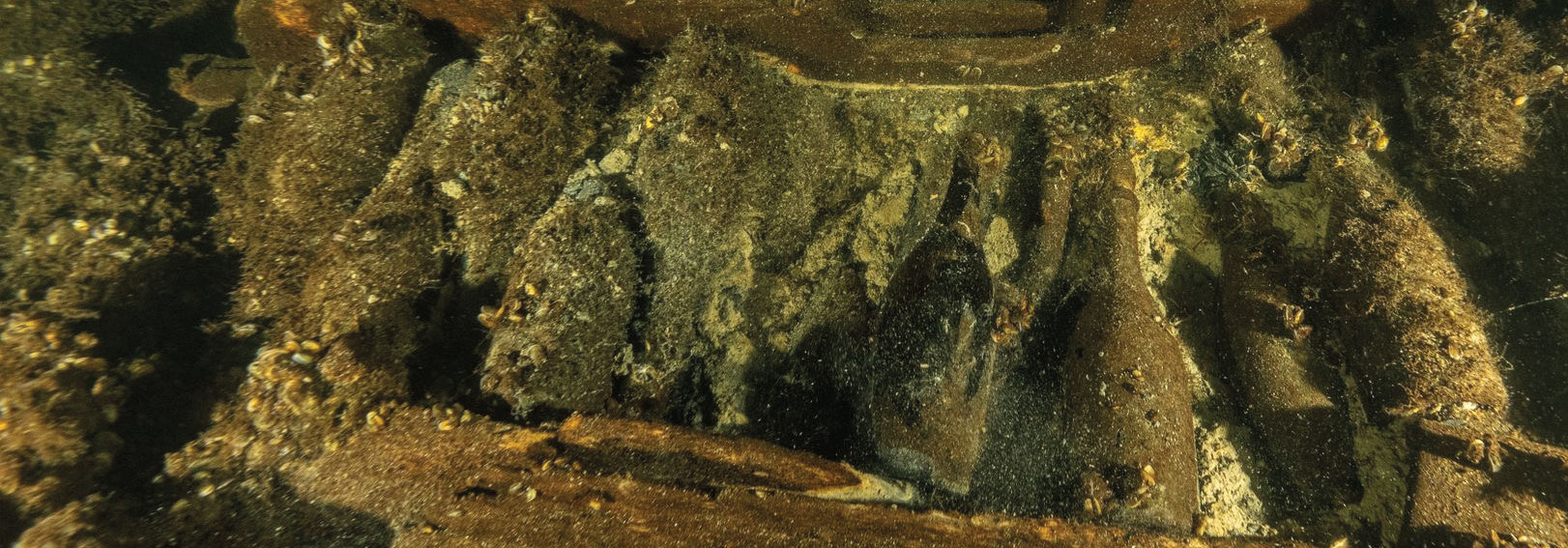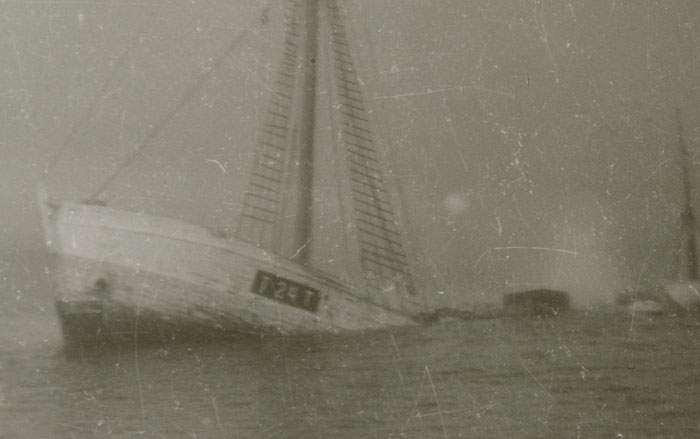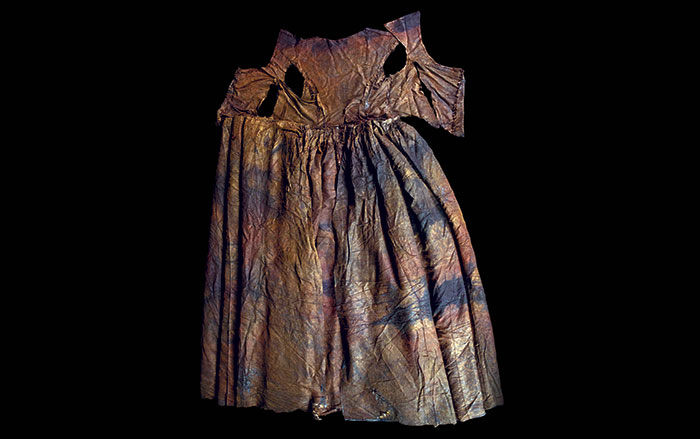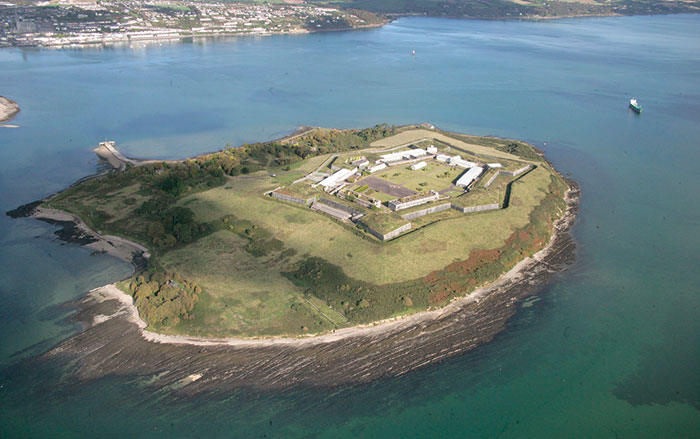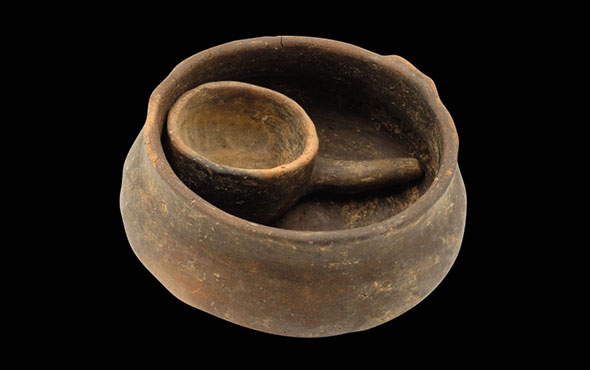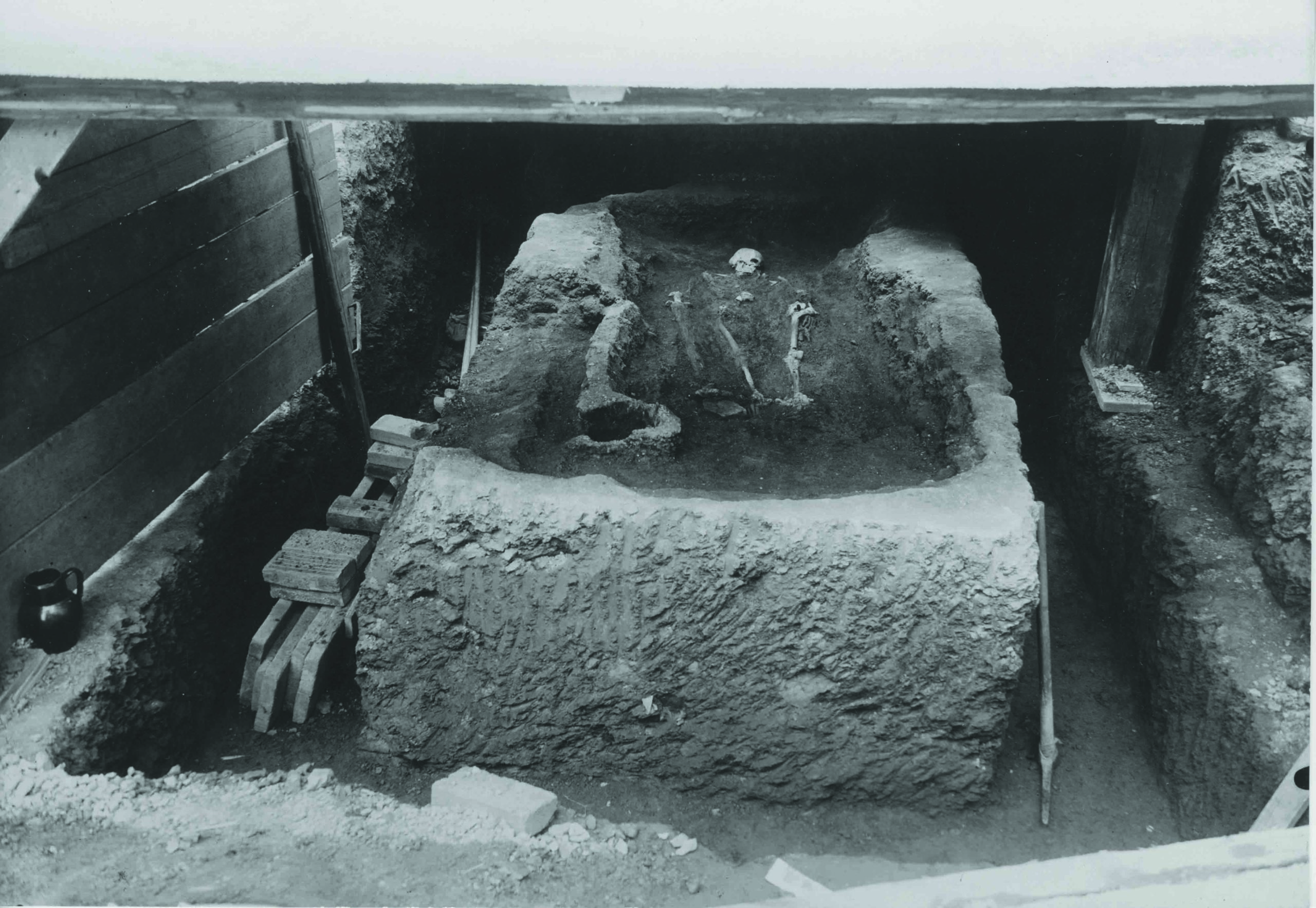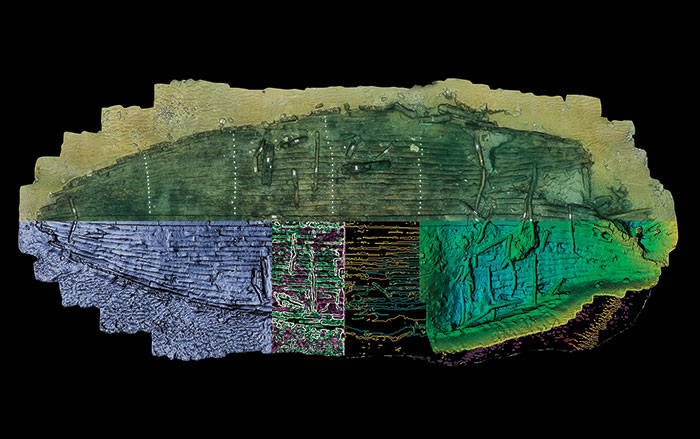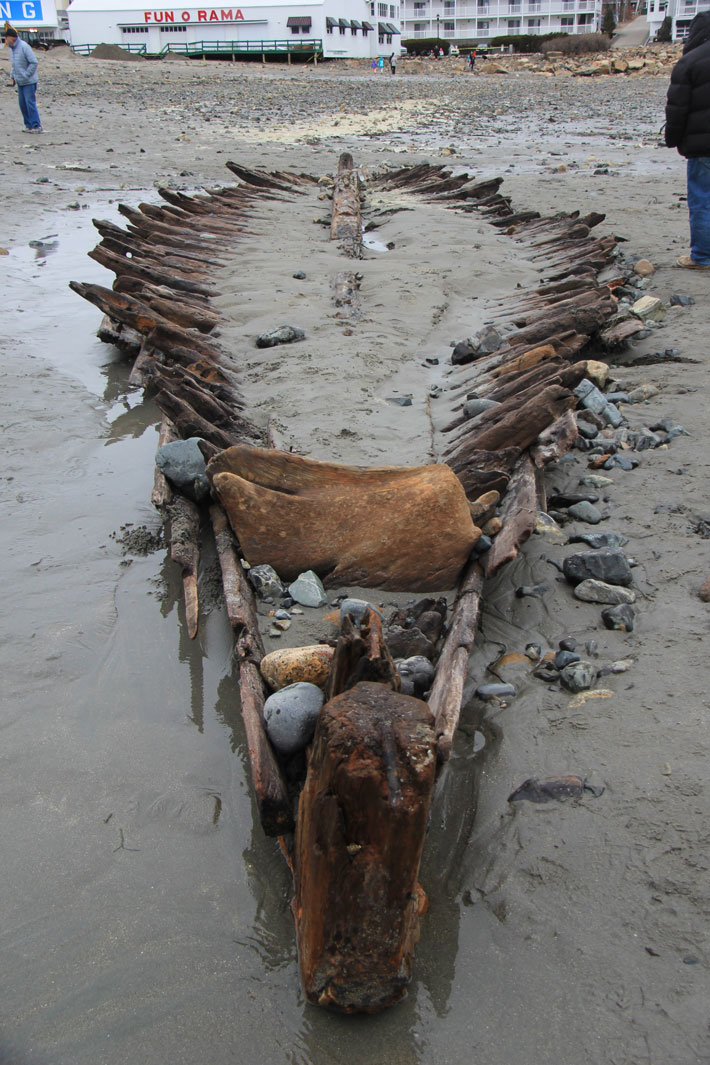
YORK, MAINE—Researcher Stefan Claesson has determined that the remains of a ship that periodically appear in the shifting sands of southern Maine date to the mid-eighteenth century, according to a Seacoast Online report. The hull currently measures about 50 feet long, but Claesson thinks the narrow vessel was about 60 feet long when it was built. “I believe it is the sloop Defiance,” Claesson said. “I think the ship is a pink, a type of cargo ship.” Claesson said he mapped the site with a drone and geographic information system technology. Wood samples analyzed by the Cornell University Tree-Ring Laboratory were found to be from trees cut down in 1753. Using that information as a starting point, Claesson then examined notary records kept by Daniel Moulton between 1750 and 1794, and found that the Defiance ran aground in Cape Neddick Cove in 1769. “Defiance fit every description,” he explained. Additional research revealed that on its last journey, the Defiance left Salem, Massachusetts, and was headed for Portland, Maine’s Casco Bay, carrying a crew of four, flour, pork, and other supplies when it hit rocks in Cape Neddick Cove during a storm. The crew survived, but the ship was lost. Claesson has also recommended procedures to protect the wreckage from further damage. Photographs taken of the ship in the 1950s and the 1970s show that its mast has since been cut off. To read about Maine's Colonial Pemaquid State Historic Site, go to "Off the Grid."


